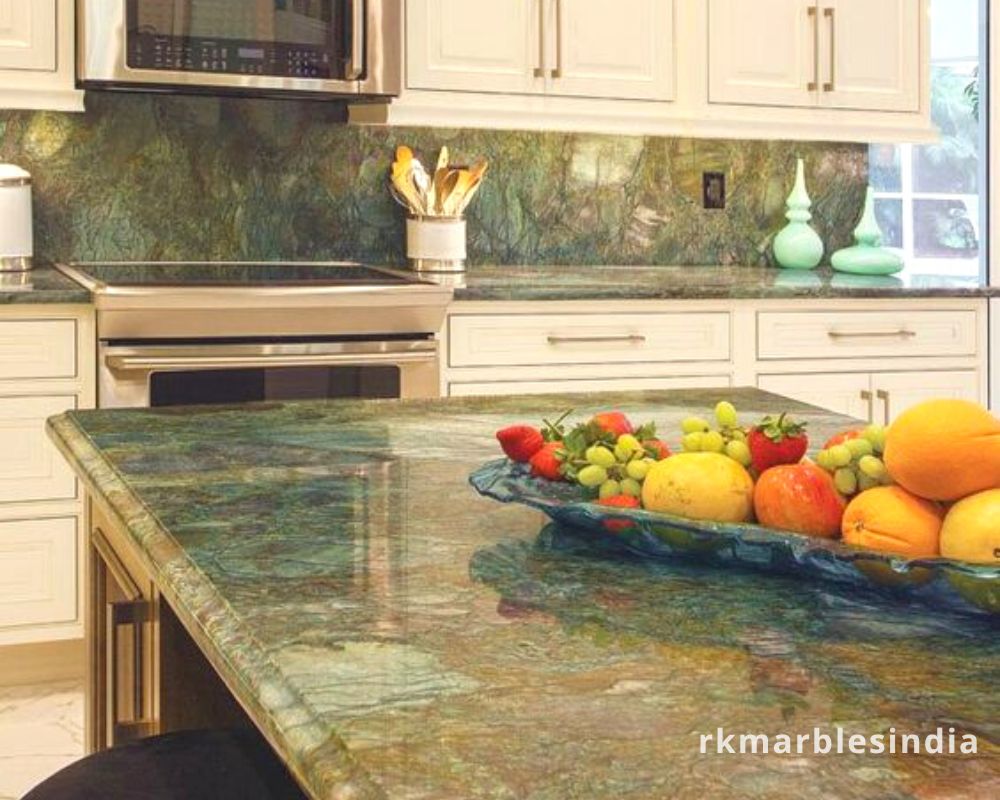Granite is a popular material used in home renovations, known for its durability, beauty and versatility. It has been a staple in homes for centuries and continues to be a top choice for both classic and contemporary designs. In this section, we will delve into the origins, composition and characteristics of granite to help you understand why it’s such a coveted material.
Origins:
Granite is an igneous rock that is formed from the cooling of molten magma deep within the Earth’s crust. It has been around for millions of years and can be found all over the world. The most well-known sources of granite include Brazil, India, China, Italy and Norway.
Composition:
Granite is primarily composed of quartz, feldspar and mica crystals. These minerals are responsible for its unique patterns and colours. Quartz is responsible for its hardness and resistance to scratching, while feldspar adds strength to the stone. Mica adds sparkles or shimmering effects to certain types of granite.
Other minerals may also be present in smaller amounts which can contribute to variations in colour and texture. These include amphibole (responsible for dark hues), biotite (for black flecks), pyroxene (for green tones) and hornblende (for brown shades).
Characteristics:
One of the main reasons why granite is such a popular choice for home renovations is because it is incredibly durable. Its high density makes it resistant to scratches, dents and heat damage.
Budgeting for Granite: Price Ranges and Cost-Saving Tips
Budgeting for granite is an important aspect to consider when planning a home renovation. This luxurious and durable material can add value and style to any space, but it’s important to understand the price ranges and cost-saving tips in order to make informed decisions.
Price Ranges:
The cost of granite can vary greatly depending on various factors such as colour, thickness, quality, and origin. On average, the price per square foot of granite can range from Rs 60 to Rs 700. For example, more exotic colours like Blue Bahia or Calacatta Gold tend to be at the higher end of the spectrum while more common colours like Ubatuba or Giallo Ornamental are on the lower end.
In addition to colour, the thickness of the slab also affects the price. Thicker slabs tend to be more expensive as they require more material and labour during fabrication. The most common thicknesses for residential use are 2cm (3/4 inch) and 3cm (1-1/4 inches).
Another factor that can impact the price is where the granite is sourced from. Imported granites tend to be pricier due to transportation costs and tariffs, while domestic options may offer more affordable prices.
Cost-Saving Tips:
- Consider prefabricated granite:
Prefabricated (prefab) granite countertops are pre-cut in standard sizes with finished edges already applied. They are typically less expensive than custom-cut slabs because they require less labour during fabrication. While this option limits your choices in terms of colour and edge profile, it can be a cost-effective solution for smaller spaces or budget-friendly projects.
- Shop around for the best deals:
Getting quotes from multiple suppliers and comparing prices is always a good idea. Some suppliers may offer discounts or promotions, so it’s worth doing some research to find the best deal.
- Opt for a simpler edge profile:
Choosing a simpler edge profile like straight or bullnose instead of more intricate options like ogee or waterfall can save you money on fabrication costs.
- Consider remnants:
Remnants are leftover pieces of granite from larger slabs that have been cut for other projects. They are typically sold at discounted prices and can be used for smaller projects such as bathroom vanities or kitchen islands.
- Choose a less popular colour:
As mentioned before, more exotic colours tend to be pricier than common ones. If you’re on a budget, consider choosing a less popular colour that is still beautiful but may not be as expensive.
- DIY installation:
Installing granite countertops yourself can save you significant labour costs. However, this option requires some experience and specialized tools, so it’s important to research and make sure you’re comfortable with the process before attempting.



